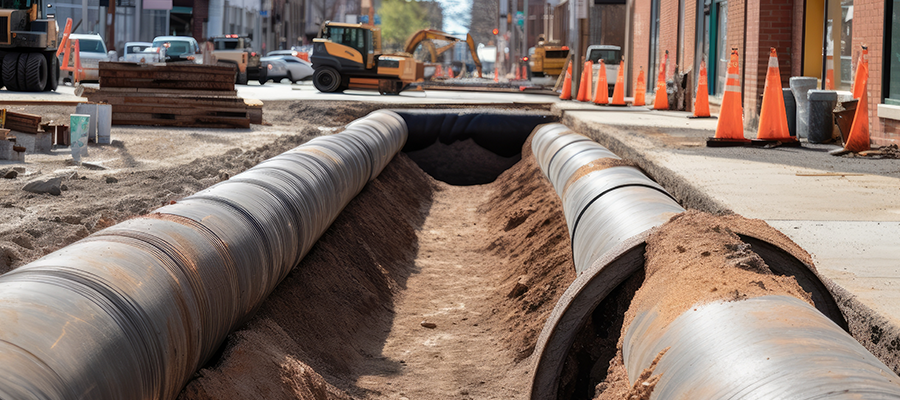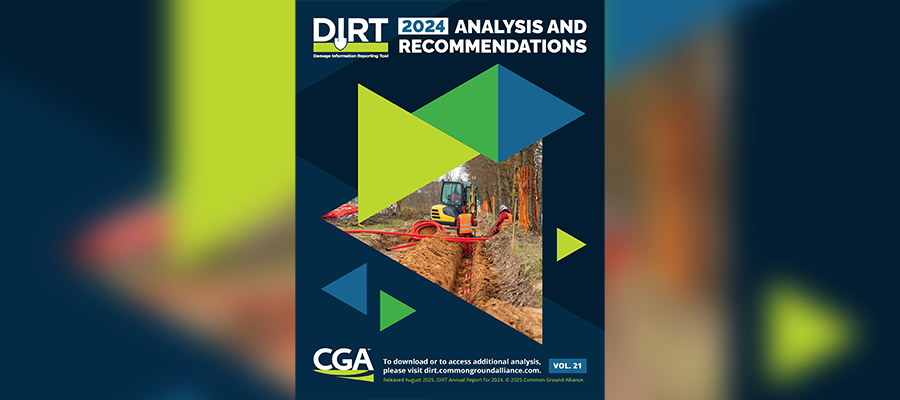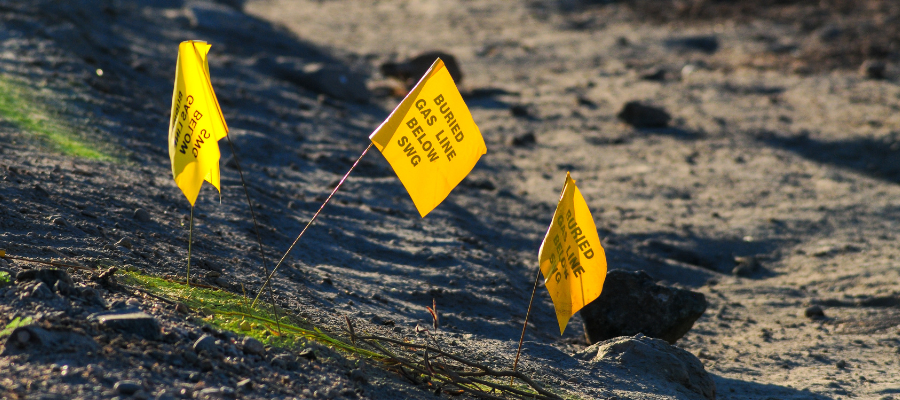Damage Prevention Legislation and Standards

Damage Prevention Legislation and Standards
Underground infrastructure has existed for thousands of years and is critical to modern society. It includes essential services like electricity, gas, water, and telecommunications. Many cities are facing aging underground infrastructure. Underground systems today include widespread networks of underground fiber optic cables. Smart cities introduce new forms of underground infrastructure including sensors and automated systems. In response to climate change, green infrastructure includes permeable pavements and underground water storage systems to manage stormwater and reduce flooding.
This hidden underground network has a significant risk of damage during excavation leading to costly repairs, service disruptions, and life-threatening incidents. According to the Common Ground Alliance (CGA) with information compiled by various industry groups, over 20 million miles of pipes, cables, and wire are buried below ground. This estimate was first established in 1994 and is understood to have grown significantly since then. Damages per million dollars of construction spending and damages per one thousand 811 center transmissions increased 12.35% and 9.34% respectively from 2021 to 2022 as reported in the CGA’s 2022 Damage Information Reporting Tool (DIRT) Report.
Regulations
To mitigate damage risks a comprehensive framework of federal and state laws, coupled with industry best practices, has been established to guide safe excavation practices.
Several government agencies have responsibilities related to underground damage prevention including:
- Pipeline and Hazardous Materials Safety Administration (PHMSA)
- Federal Communications Commission (FCC)
- Occupational Safety and Health Administration (OSHA)
- Environmental Protection Agency (EPA)
- National Transportation Safety Board (NTSB)
- Federal Energy Regulatory Commission (FERC)
- Department of Homeland Security (DHS)
Each agency has a special focus ranging from worker safety and environmental protection to communication and infrastructure resilience.
Regulations by states vary but align with federal guidelines and best practices. Nearly all states require that individuals and companies planning to excavate must contact the state’s one-call system before beginning excavation work, generally within 48 to 72 hours. Utilities are responsible for accurately marking the location of their underground facilities within the state-mandated time frame. Excavators must adhere to the markings and maintain the visibility of these marks during excavation.
States impose fines and penalties for non-compliance to damage prevention regulations. Enforcement is typically handled by state agencies such as Public Utility Commissions, Departments of Transportation, or dedicated state boards focused on excavation safety.
Legislation that requires mandatory reporting of all damage incidents has led to better data collection and analysis. This data has been used to refine standards and improve damage prevention strategies, further reducing incidents.
According to the CGA 2022 (DIRT) Report they are monitoring the impact of California and Virginia’s new legislation that strengthens enforcement of no-notification damages.
Promoting Standards
The CGA is the industry’s primary organization responsible for creating and promoting best practices and standards focused on underground damage prevention. The CGA was established as a result of the U.S. Department of Transportation’s Common Ground Study in 1999. Since then, it has played a pivotal role in coordinating efforts among various stakeholders — including utility companies, excavators, regulators, and safety advocates — to develop comprehensive guidelines and standards for safe excavation practices.
The CGA publishes its Best Practices Guide and it was updated in 2024. It is recognized as the resource that outlines standardized procedures. They also publish DIRT reports to identify trends and areas for improvement.
811 One-Call System
The 811 system represents a successful collaboration between government agencies, utility companies, and industry organizations. It is a cornerstone of underground damage prevention efforts in the United States. The CGA best practices manual includes more than 160 practices that cover all phases of the 811 process.
The history of the one-call system began in the 1980s in Rochester, NY, and was known as “Dig Safely New York.” The system allowed excavators to make a single call to notify all utilities of planned exaction work. In 1986, The Pipeline Safety Act amendments required establishing one-call notification systems across the United States. This federal law mandated that states implement one-call systems to prevent damage to underground pipelines and other utilities.
In 2005 the FCC designated 811 as the three-digit number for one-call services. It was to simplify the process and provide an easy-to-remember number to be used nationwide. It officially launched in 2007.
Legislation’s Lasting Impact
The combination of stringent legislation, effective enforcement, and the adoption of standardized best practices has led to a marked reduction in underground utility damage. As reported in the 2022 DIRT report, damages were cut in half in the decade following the designation of 811 as the national before-you-dig number, but then started rising again and at best have leveled off in recent years.
Increased penalties for non-compliance with damage prevention laws have led to greater adherence to safety protocols. States like Texas and Minnesota have introduced higher fines for failure to comply with one-call laws, leading to better industry practices and fewer damages. Arizona implemented strict enforcement of its damage prevention law, which includes fines for violations.
A successful case study includes Virginia’s state law requiring a positive response from utility operators — confirming that lines have been marked before excavation. It has been shown to reduce damage incidents.
Related Articles

By Tommy Combs, President, Bermex In the latest edition of the DIRT Report, the Common Ground Alliance (CGA) reveals that despite decades of progress in underground infrastructure damage prevention, the industry remains at a critical turning point. The 2024 data show a concerning plateau, and in some cases a reversal, in the trend of reducing[...]
Read More
Every year on Veterans Day, we pause to honor the men and women who have worn our nation’s uniform. They come from every background and every corner of the country, united by a common purpose: to serve something greater than themselves. Their service enriches our organization, and we are grateful for the impact they continue[...]
Read More
By Mark Green, Business Development Manager, Bermex Environmental responsibility and resource conservation are more than good PR; they have become critical, bottom-line imperatives. Utility companies find themselves at the forefront of a sustainability battle that extends far beyond their traditional operational boundaries. At the heart of this challenge lies a deceptively simple yet profound issue:[...]
Read More
By Thomas Gooch, Director of Operations, Bermex Every few minutes across the United States, someone digging into the ground accidentally strikes an underground utility line. The consequences of these incidents extend far beyond the immediate damage to pipes, cables, or equipment. Utility strikes represent an extremely expensive and dangerous infrastructure challenge. The Financial Impact According[...]
Read MoreCategories
Recent Posts
- Diffusing a Difficult Customer [Infographic] 10th Sep 2018
- Neighborhood Safety [Infographic] 24th Sep 2018
- Bermex Has Named Keith Pancake as New Safety Manager 02th Dec 2019